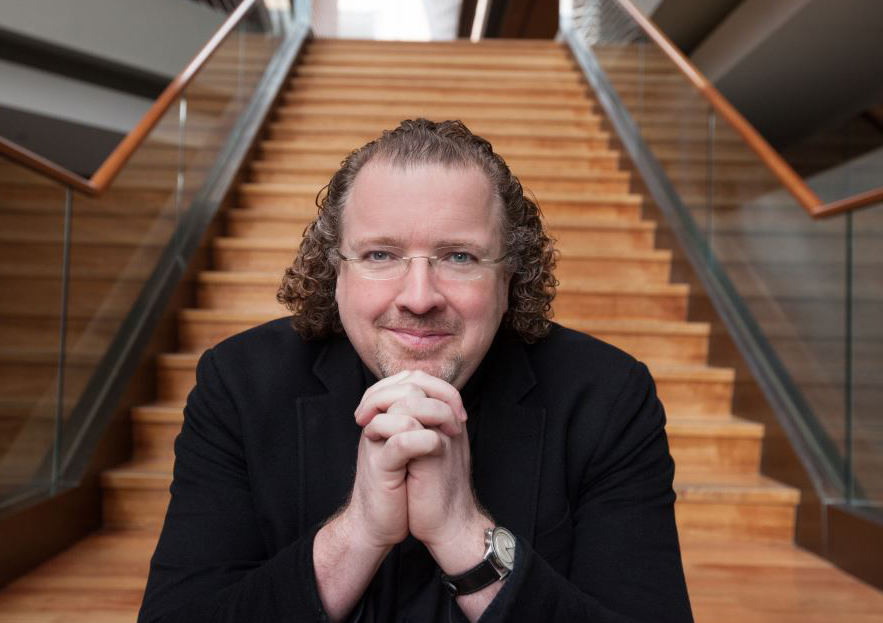Denève leads New World in alluring program of French rarities
The music and spirit of Maurice Ravel dominated the New World Symphony’s program on Saturday night of French works written between 1903 and 1913. Two scores by the French master and ballet music by two composers influenced by him highlighted the lineup presented by artistic director Stéphane Denève at the New World Center
Conducting fellow Molly Turner opened the evening with a voluptuous performance of Ravel’s Alborada del gracioso. From the initial crisp string pizzicatos, Turner’s reading gave full measure to Ravel’s opulent orchestration. Her sense of balance and calibrated dynamics extended to the the two harps which were clearly audible, even over the full ensemble. Maggie O’Leary’s bassoon solo was replete with Andalusian color and refulgent tonal shading.
The concert’s centerpiece was Ravel’s song-cycle Shéhérazade with mezzo-soprano Isabel Leonard as the star soloist. The East was a focus of French artists from diverse genres in the early 20th century and Ravel was no exception. The three songs are replete with colorful orchestral effects and curving vocal paths, the texts of Tristan Klingsor bringing their own suggestions of exoticism.
Leonard’s alluring mezzo timbre was perfect for Ravel’s vision of a dream of a magical Orient. Her voice is even throughout the entire range with a thrilling top bereft of strain. Leonard’s middle register is rich and voluminous, but the sweetness of her soft singing really cast the magical spell at the heart of Ravel’s opus. In the second song “The Enchanted Flute,” Leonard’s tonal hues matched the perfumed flute lines. Her vocal enactment of spurned love in “The Indifferent One” struck just the right note of observed coolness. Denève and the large ensemble matched Leonard’s panoply of vocal shades and tonal beauty.
Albert Roussel (1869-1937) was one of France’s most original and distinctive creative voices. The influences of Ravel and Debussy’s impressionism, neo-classicism and the avant garde modernism of Stravinsky and Prokofiev that swept through Parisian artistic circles are all present in Roussel’s scores. Such legendary conductors as Charles Munch, Rafael Kubelik and Arturo Toscanini championed his works. Denéve has recorded all of Roussel’s symphonies and ballet music and is leading a welcome revival of the French composer’s impressive catalogue
Roussel’s 1913 ballet The Spider’s Feast is a tale of the cycle of life in the insect world. From the Ravelian opening wind figures to the elegant Gallic waltz of the mayfly, the 32-minute score is cinematic in scope and luminous orchestration. (Denève presented the entire work rather than the suite the composer put together for concert performance.) Commissioned animation by Grégoire Pont accompanied the music, along with Roussel’s descriptive text, above the hall’s stage and on the side walls. Pont’s visualization of the scenario was inventive and greatly entertaining without being intrusive to the music.
Denève was on top of every change of meter and drew his signature lush string textures and vibrant ensemble playing in this worthy traversal of an important French dance creation. One hopes he will program some of Roussel’s symphonies in future seasons.
The concert concluded with the suite from the 1907 ballet La Tragédie de Salome by Florent Schmitt (1870-1958). Unlike in Oscar Wilde’s play and Richard Strauss’ opera, Salome is the victim of sexual depravity in Schmitt’s revisionist conception.
The 27-minute concert version suggests the melding of Ravel and Richard Strauss influences. Touches of exotic coloration alternate with throbbing, driving rhythms worthy of Stravinsky’s Le Sacre de printemps. (Stravinsky was a great admirer of Schmitt’s opus) The work is fascinating for its thematic inspiration and striking orchestral flourishes.
Denève, who told the audience that he loves the score, brought out every ounce of color from Schmitt’s orchestration. He also displayed a deft touch to sections that could easily turn heavy or murky. He drew a vast dynamic range from soft wind motifs to climaxes that nearly set a record for volume in the New World Center. The players gave brilliant performances of music few, if any, had ever heard, much less played before. The entire concert demonstrated the chemistry between conductor and orchestra at its best.
The New World Symphony repeats the program 2 p.m. Sunday. nws.edu
Posted in Performances
Leave a Comment
Sun Jan 21, 2024
at 11:11 am
No Comments







